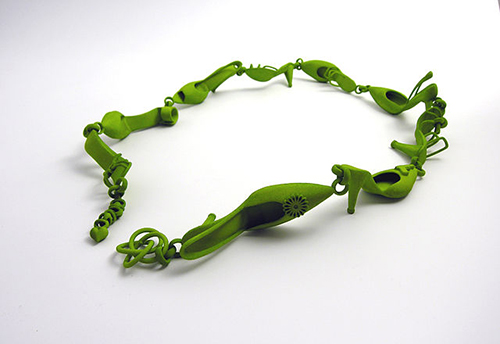Disclaimer: The statements and opinions expressed in this article are those of the author(s) and do not necessarily reflect the positions of Thoughtworks.

Any sufficiently advanced technology is indistinguishable from magic. – Arthur C. Clarke.
“Would you like the heel of those shoes to be red, madam? No problem, let me print them out for you.”
There is no doubt about it...3D printing is set to be a game-changer. The technology lends itself to mass customization. Already the technology exists to print everyday objects from bow ties to bras, from Lego pieces to guitars. In fact, 3D printing experts are very close to printing artificial livers. As the technology develops and becomes more accessible, the impact of 3D printing is set to be much, much bigger than this. Consumers will be able to create and customise goods to their exact liking - sounds like consumer nirvana! Manufacturing will effectively ‘go digital’. To paint a picture, Airbus plan to print a giant, fully functional aircraft by 2050.
Good or bad news for retail? It depends. Retailers who adapt and explore this technology will certainly be a step ahead. The novelty and excitement of 3D printing is perfect for retail theatre. There are, however, infinite implications for manufacturers, retailers and consumers alike.
3D printing is already being explored by some of the world’s biggest entities; Airbus, GE, Siemens and Tesco to name a few. Selfridges plans to push sales of 3D printers in an Oxford Street pop-up store this Christmas season.

Above: 2009 'Fashionista' necklace by Dutch jewellery designer and conceptual artist Ted Noten.
Whether it will become the ‘third industrial revolution’ (as dubbed by The Economist) or not remains to be seen. The major limitation right now is long printing times, but remember it once took five minutes to boot up a desktop computer or connect to the internet! One thing is certain; as 3D printing develops it is definitely worth keeping on the retail radar.
On 12 October 2013, Walmart-owned supermarket Asda launched a 3D printing trial in its York store. Shoppers can now scan themselves or any other item and bring home a ceramic ‘mini-me’ model to give as a present, put on the mantelpiece or even create a personalised chess set! This is one of the first times the technology, typically used for prototype and model creation, has been widely available in a B2C environment. The trial attracted widespread interest and customers drove from as far as London for the experience.

Above: Objects printed by Thoughtworkers using the Melbourne office 3D printer.
The real disruption will come if and when 3D printers are a common household item. Household 3D printers have the potential to dramatically reduce the need for traditional manufacturing and the associated overheads such as wages and transportation costs. Not to mention the huge threat to Intellectual property. Just imagine a world where you could simply print that pesky missing Lego piece or spare car part from your lounge room.
It would feel just like magic!
Share in the comment section. Are you exploring 3D printing in your organization? If yes, how?
Disclaimer: The statements and opinions expressed in this article are those of the author(s) and do not necessarily reflect the positions of Thoughtworks.
